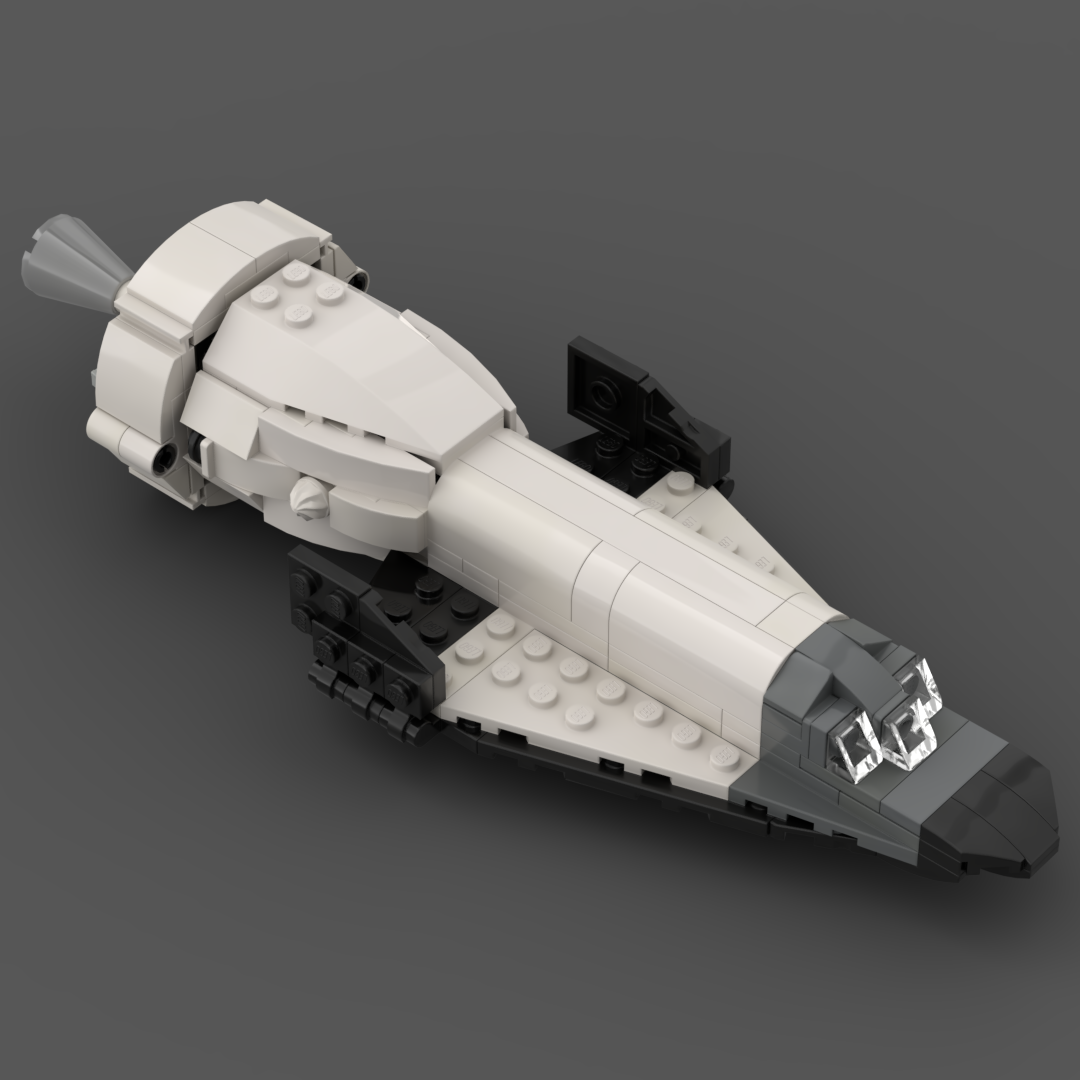
LEGO Designer:
Nicolas Riveau (LegoRocketCollection)
Designed:
October 2020
Categories:
All, Space Agency - ESA, Spaceplanes
Hermes was a proposed spaceplane designed by the French Centre National d’Études Spatiales (CNES) in 1975, and later by the European Space Agency (ESA). It was superficially similar to the American Boeing X-20 Dyna-Soar and the larger Space Shuttle.
In January 1985, CNES proposed to proceed with Hermes development under the auspices of the ESA. Hermes was to have been part of a crewed spaceflight program. It would have been launched using an Ariane 5 launch vehicle. In November 1987, the project was approved; it was to commence an initial pre-development phase from 1988 to 1990, after which the authorisation to proceed to full-rate development was to depend on the outcome of this phase. However, the project was subject to numerous delays and funding issues around this period.
As intended, Hermes was a reusable launch system that would have been used to transport both astronauts and moderate-size cargo payloads into low Earth orbit (LEO) and back again. In basic concept and operation, Hermes bears a resemblance to other reusable launch vehicles, such as the Space Shuttle. However, unlike the Space Shuttle, Hermes had no ambition to carry heavy cargoes as this role was to be performed by the uncrewed and automated Ariane 5 launcher instead. In the configuration envisioned prior to the project’s termination, Hermes was to have been capable of transporting a maximum of three astronauts along with a 3,000 kg pressurized payload. The final launch weight would be 21,000 kg, which was viewed as being the practical upper limit of what an extended Ariane 5 launcher would be capable of lifting.
Hermes was envisaged to be launched using the Ariane 5, replacing the upper stage of the latter during such missions, and would have detached from the launcher towards the latter part of the ascent. Prior to 1986 redesign, Hermes is a single spaceplane, containing (from front to back) crew compartment for 6, airlock, unpressurized cargo hold, and service module. After 1986, due to Challenger incident, it was substantially redesigned. The crew cabin is reduced to only carry 3 astronauts, with the cargohold now pressurized and cannot carry/bring back satellites. Hermes now consisted of two separate sections: the vehicle itself and a cone-shaped Resource Module, the latter was to contain a docking mechanism and have been attached to the vehicle’s rear, and would have been detached and discarded prior to re-entry. Only the crewed vehicle would re-enter Earth’s atmosphere and be re-used, both the Resource Module and the launcher would be expended. When operated in conjunction with Hermes, the Ariane 5 would have had its upper stage entirely replaced to accommodate both the space plane and an adaptor to mate the vehicle with the main cryogenic stage, the equipment bay of the launcher would also be absent while the space plane itself would perform all guidance and control functions. The development and configuration of the Ariane 5 was strongly influenced by the requirements of Hermes, while retaining minimal impact on the launcher’s commercial competitiveness on non-Hermes missions.
In comparison to the Space Shuttle, Hermes is a substantially smaller vehicle. As well as being scaled down, it does not share the ogival planform of the Shuttle, having opted for a highly-swept delta wing complete with wingtip devices, similar to the proposed Boeing X-20 Dyna-Soar spacecraft. Like the Shuttle, it would have had a pressurised cabin in which a maximum of six crew members could be seated, two of which serving as the pilots; while an unpressurised cargo bay positioned aft of them would have been fitted with large doors spanning the length of the bay along the fuselage. The vehicle would have been powered by a pair of 2,000N-thrust liquid propellant rocket motors, which were to have been identical to those used on the L4 low-energy upper stage of the Ariane 5.
In 1992, Hermes was cancelled. This was in part due to unachievable cost and performance goals, as well as the formation of a partnership with the Russian Aviation and Space Agency (RKA), which reduced the demand for an independent crewed spaceplane. As a result, no Hermes shuttles were ever built. During the 2010s, it was proposed to relaunch the Hermes vehicle to serve as a partially reusable air-launched spaceplane launch system, known as SOAR.
Downloads
Pay what you feel
This digital model is provided free of charge. However, if you like it, and you would like to thank the designer for their time, please consider a “tip” via tipeee.com. A “tip” is voluntary and optional support. It allows you to help creators and tell them that you love their work.
Tips can be made by following this link:
Part count: 204 bricks, 78 lots.
| Unit | width | length | height |
|---|---|---|---|
| Studs | 27.8 | 10.8 | 6.4 |
| Inches | 8.7 | 3.4 | 2.0 |
| Centimetres | 22.2 | 8.6 | 5.1 |
No external URL provided.
Launch History information from space.skyrocket.de
Launch History information from space.skyrocket.de
Related Posts
None found

